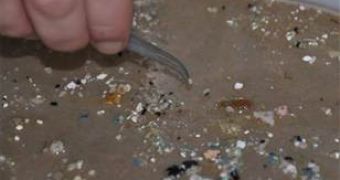Earlier this year, a team made up of chemistry professor Sherri Mason and some of her students from the SUNY Fredonia University decided that the best way to spend their summer would be to sail the Great Lakes in Northern America, collect water samples and analyze them.
At the time when they took this decision, they had little idea that they would end up making quite a startling discovery.
To cut a long story short: the Great Lakes are presently tainted with significant amounts of plastic microparticles.
According to The Star, the plastic pollution in these water sources is so great, that it stands to give the Great Pacific Garbage Patch a run for its money.
Although the plastic bits and pieces these small-scale scientists found in the Great Lakes are smaller than the one typically found in oceanic waters, the fact remains that laboratory tests have shown that their concentration in some of the most contaminated areas is roughly one of 600,000 pieces per square kilometer.
On the other hand, they did collect samples which hint of a concentration of only 600 pieces per square kilometer, so perhaps further studies are needed to as to pin down the exact pollution hot spots.
The three lakes they took samples from are Lake Erie, Huron and Superior.
For the time being, Sherri Mason and the students who accompanied her on this green-oriented trip are busy trying to put together a scientific study which thoroughly explains both their method of gathering these data, and the results they got after analyzing the water samples they collected.
Hopefully, one or more scientific journal will agree to publish their work.
As Sherri Mason explains, most investigation into plastic pollution focuses on oceans, which is why freshwater lakes more often than not fade into the background.
For those unaware, microplastics are basically really small bits and pieces of plastic which make their way into aquatic environments when bigger pieces begin to degrade and when cosmetic cleansers get washed down the drain.

 14 DAY TRIAL //
14 DAY TRIAL //